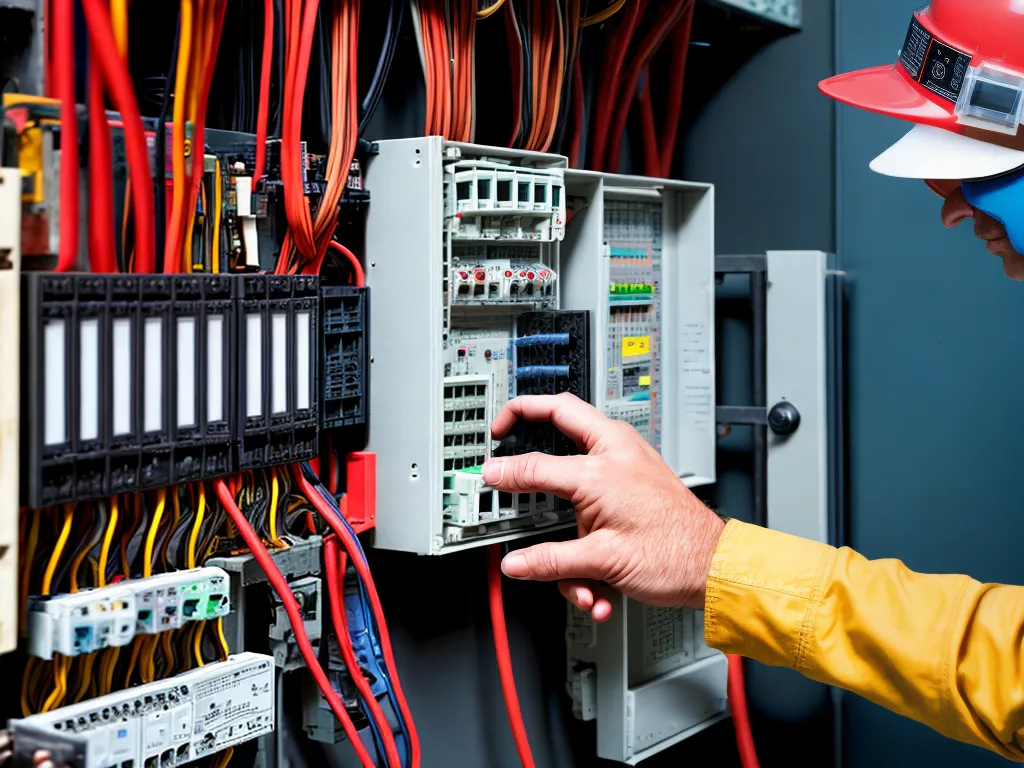
How to Troubleshoot Unfamiliar Electrical Control Panels
Introduction
Troubleshooting electrical control panels that you are unfamiliar with can be daunting, but following some basic guidelines can make the process much easier. As an electrician, I often have to diagnose issues with control panels designed by other companies or engineers. Over the years, I've learned effective strategies to quickly get up to speed on an unfamiliar system. In this article, I'll walk through my step-by-step approach to troubleshooting unfamiliar electrical control panels safely and efficiently.
Safety First
When working with any electrical equipment, safety should always be your top priority. Rushing into troubleshooting without taking proper precautions can put you and others at risk. Here are some key safety tips when tackling an unfamiliar control panel:
-
De-energize the equipment. Lock out and tag out the main power source to avoid electric shock hazards.
-
Review safety procedures. Check for any special precautions outlined by the manufacturer.
-
Wear PPE. Use insulated gloves, safety glasses, and other protection.
-
Check for hazards. Look for exposed conductors, damaged wiring, missing covers, etc.
-
Follow electrical safety protocols. Use properly rated test equipment, don't work alone, etc.
No machine is worth injuring yourself over. Take your time to thoroughly assess hazards before proceeding.
Study the Manuals
The manufacturer's manuals are your best resource when unfamiliar with a piece of equipment. Locate all documentation you can find, including:
- Electrical schematics
- Wiring diagrams
- Mechanical drawings
- Parts lists
- General operating manuals
Slowly work through the manuals to gain working knowledge of the control panel before touching anything. Highlight key components and note their locations. Having a basic roadmap of the system will make the troubleshooting process faster and more targeted.
Visually Inspect the System
After reviewing the manuals, conduct a thorough visual inspection of the control panel. Observe things like:
-
Component placement- Note locations of key parts like circuit breakers, switches, PLCs, terminals, fuses.
-
General condition - Look for loose/damaged wiring, corrosion, dirt/debris, missing covers.
-
Labels - Check for labels explaining functions of switches, lights, sensors, actuators.
-
Indicators - Identify meanings of indicator lights (power, run, fault etc).
Carefully check over the entire control cabinet, even parts of the system not directly related to your issue. This will provide greater understanding of the overall functionality.
Consult with Operators
Leveraging the expertise of personnel who regularly operate the equipment can provide valuable insights. Speak with operators to understand:
- Normal start-up and operation procedures
- Typical problems encountered
- Any recent changes made to the system
- Other key operating parameters
Operators often have practical troubleshooting advice. Discuss the specific problem at hand plus any other useful tidbits they're willing to share.
Start Broad, Then Narrow Your Focus
When troubleshooting an unfamiliar system, initially take a broad view before zooming in on specifics. Follow these general steps:
-
Check power - Verify proper voltage to panel and individual sections.
-
Scan system overview - Note which sections are energized versus de-energized.
-
Check inputs - Examine incoming sensor readings and see if they are expected.
-
Assess outputs - Note which outputs/actuators are functioning versus failed.
Once you've spotted the malfunctioning part of the system, concentrate your efforts there. Don't waste time investigating properly operating areas.
Verify Expected Operation
By this point, you should have identified the specific section where troubleshooting is needed. Before doing in-depth diagnostics:
-
Observe normal operation - Have operators show you proper functioning so you know what "correct" looks like.
-
Check for loose connections - See if simply re-terminating wires resolves the problem.
-
Swap suspected parts - Replace sensors, relays, switches, cables with known good spares.
Many issues can be fixed with simple actions. Verify operation frequently as you go to avoid straying down the wrong path.
Employ a Systematic Approach
For complex issues, adopt a logical troubleshooting methodology:
-
List all probable causes - Brainstorm possible reasons for the malfunction based on symptoms.
-
Divide into categories - Group potential causes such as electrical, mechanical, operational, software-based.
-
Test most likely first - Check higher probability options initially for fastest results.
-
Confirm cause - Validate root issue once isolated by testing thoroughly.
Stay calm, think critically, and attack the problem systematically. Jumping randomly between possible fixes is inefficient. Work the issue from all angles.
Seek Additional Resources
If you get completely stuck, be ready to leverage other available resources:
-
Consult manufacturer - Many companies offer technical phone support for troubleshooting.
-
Check forums - Search online forums where others have discussed similar problems.
-
Call for contractor support - Bring in outside expertise if needed.
Know when you need assistance. Don't dig yourself into a deeper hole out of stubbornness. Use all knowledge resources at your disposal.
Conclusion
Troubleshooting unfamiliar electrical control panels requires patience, diligence, and the right approach. Always make safety the #1 priority. Slow down and learn the system. Inspect thoroughly. Communicate with operators. Follow a systematic procedure. Seek help when needed. With sound fundamental troubleshooting habits, unraveling problems on complex equipment gets far less daunting. If the proper techniques are adhered to, even novice electricians can take on the challenge. Stay safe, informed, and resourceful, and you'll be tracking down problems in no time.